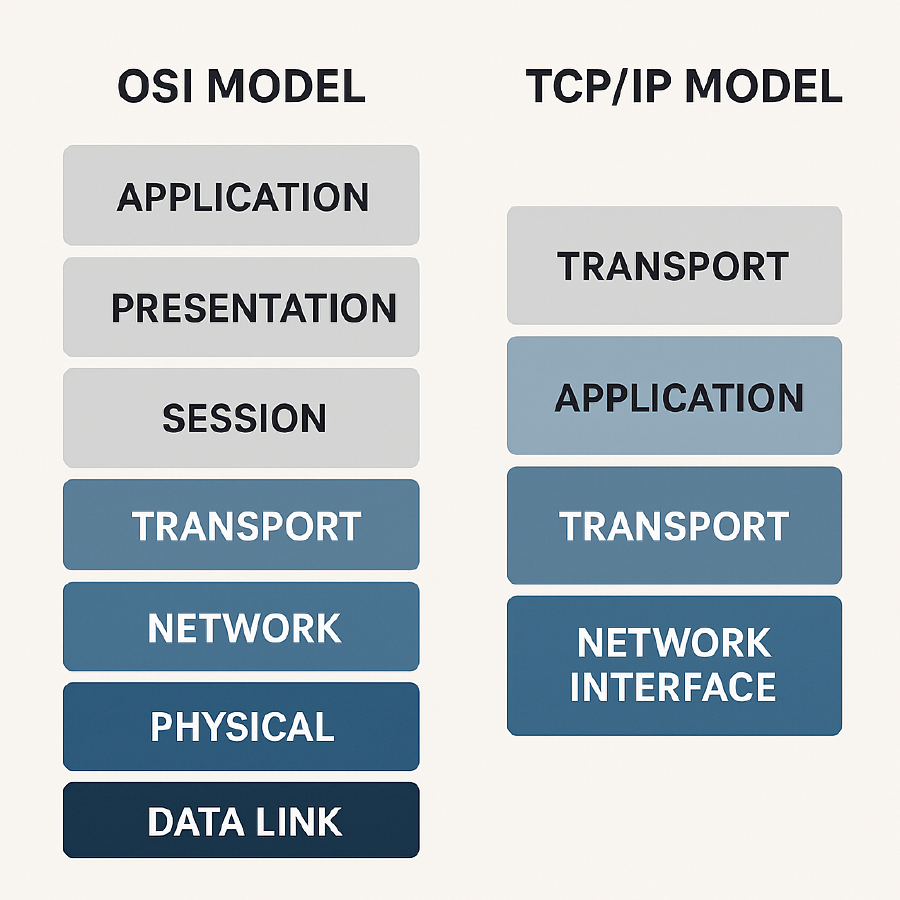Network Model Layers: OSI vs TCP/IP Explained
August 15, 2025

In networking, layered models provide a structured way to understand how data moves from one device to another. Two models dominate this space: the OSI model and the TCP/IP model.
In this post, we’ll break them down, compare their layers, and show how they apply to modern IT and DevOps workflows.
Why Network Model Layers Matter
When communication is split into layers, it’s easier to:
- Design networks with modular components
- Diagnose issues by isolating them to a specific layer
- Ensure interoperability between systems and vendors
The OSI Model (7 Layers)
The Open Systems Interconnection model is conceptual and consists of:
- Physical – hardware, cables, signals
- Data Link – frames, MAC addresses, error detection
- Network – IP addressing, routing
- Transport – TCP/UDP, reliability
- Session – managing connections
- Presentation – data formatting, encryption/decryption
- Application – user-facing protocols like HTTP, SMTP
Example: An HTTP request passes through all layers, from application down to physical transmission.
The TCP/IP Model (4 Layers)
More implementation-focused, the TCP/IP model merges some OSI functions:
- Network Interface – physical network communication
- Internet – IP and routing
- Transport – TCP or UDP
- Application – HTTP, DNS, SMTP, etc.
OSI vs TCP/IP — Side by Side
Comparison of the OSI Model (7 layers) and TCP/IP Model (4 layers)
| Feature | OSI Model | TCP/IP Model |
|---|---|---|
| Layers | 7 | 4 |
| Usage | Conceptual framework | Real-world implementation |
| Education | Detailed learning tool | Practical training |
Practical Applications for DevOps
- Network troubleshooting with
ping,traceroute, Wireshark - Security controls such as firewalls (Layer 4–7) and VPNs (Layer 2–3)
- Service design in microservices and API architectures
Key Takeaways
- OSI is ideal for learning the theory of network communication
- TCP/IP is the practical model in real-world systems
- Understanding both is essential for designing, securing, and debugging modern networks
Looking for more deep dives into IT fundamentals and DevOps best practices? Explore other Stack83 blog posts.